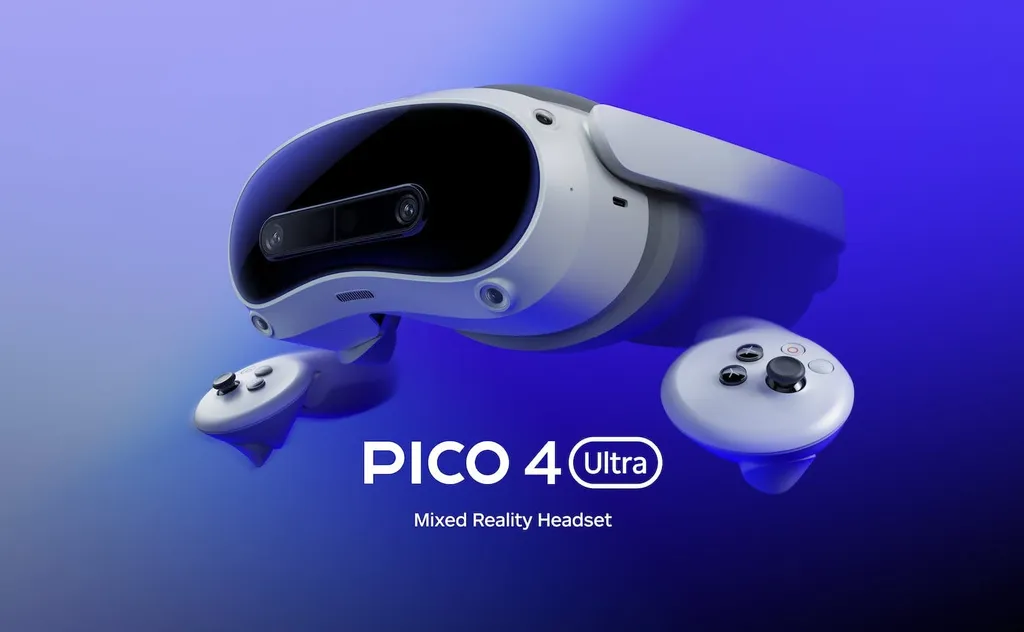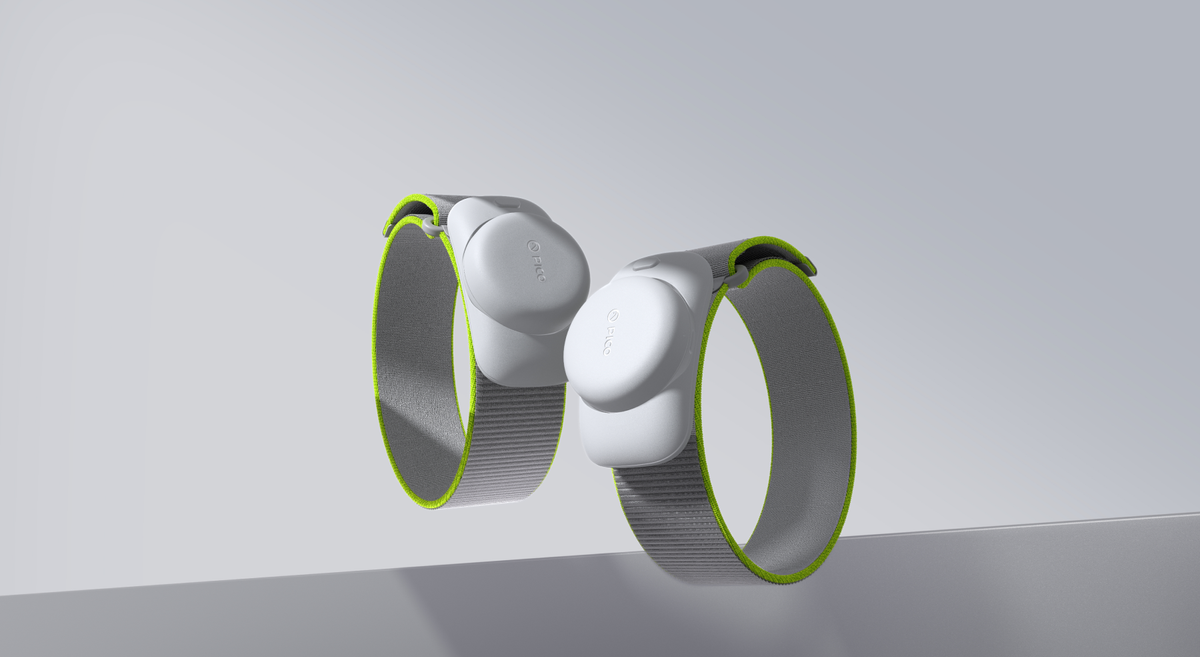Pico 4 Ultra will start arriving to customers outside China on September 20, and preorders open on Friday. It's set to be the first direct competitor to Meta Quest 3.
ByteDance today confirmed that the headset is called Pico 4 Ultra in all regions, despite it previously trademarking "Pico 4S". The apparent name change may be a reaction to Meta's plans to launch Quest 3S, a lower-end version of Quest 3, whereas Pico 4 Ultra is an outright upgrade over Pico 4.
If you didn't catch the news, two weeks ago ByteDance officially announced and opened preorders for Pico 4 Ultra in its home turf China, and the first units have been arriving to Chinese customers this week.
Pico 4 Ultra - Hardware Details
Pico 4 Ultra is a refresh of Pico 4 with upgraded chipset, RAM, passthrough cameras, sensor suite, battery, Wi-Fi, and controllers.
The lenses, displays, and overall design of Pico 4 Ultra remain almost identical to the original, except the company says the display is now 25% brighter.
Pico 4 Ultra uses the same Snapdragon XR2 Gen 2 chipset as Meta Quest 3. But whereas Quest 3 pairs it with 8GB of RAM, Pico 4 Ultra has 12GB. This could make it superior for on-device multitasking, and potentially allow game developers to use higher-resolution textures and more details.
The monocular passthrough camera of the original Pico 4 has been replaced with two 32-megapixel cameras which the company says are used to deliver perspective-correct passthrough with low distortion. Passthrough only samples the cameras at 8 megapixels though. The system combines each block of four pixels into one, a technique known as pixel binning which is used by many modern smartphones.
ByteDance claims the angular resolution of Pico 4 Ultra's passthrough is 20.6 pixels per degree (PPD), compared to the 18 PPD Meta claims for Quest 3's passthrough.
The color cameras are also used for 3D video capture, up to 2048×1536 at 60 FPS. Additionally, ByteDance says Pico 4 Ultra can natively decode Apple spatial videos captured by iPhones and Vision Pro.
Between the two color cameras is what Pico describes as a time-of-flight sensor which is used for 3D environment meshing, similar to the purpose of Quest 3's depth projector.
The battery in the rear of Pico 4 Ultra's strap is slightly larger than the original's, though the company isn't claiming longer battery life, so this is likely to power the additional sensors. More significantly, the new battery supports charging at up to 45W, more than double the 20W of the original Pico 4. This should enable charging from 0% to 100% in roughly an hour.
Pico 4 Ultra is the first headset to support the new Wi-Fi 7 standard, which could enable more stable PC VR streaming for those who have a Wi-Fi 7 router.
Finally, on the hardware side, Pico 4's distinctive arc controllers have been replaced with new ringless controllers that weigh only half as much. They resemble Quest 3's Touch Plus controllers but with a less curved handle, and seem to be slightly larger.
| Pico 4 Ultra | Quest 3 | Pico 4 | |
| Launch | 2024 | 2023 | 2022 |
| Field of View | 105° × 105° | 110° × 96° | 105° × 105° |
| Eye Relief Adjustment |
❌ | ✅ | ❌ |
| Pixels Per Eye | 2160×2160 | 2064×2208 | 2160×2160 |
| Max Refresh Rate |
90Hz | 120Hz | 90Hz |
| Chipset | Snapdragon XR2 Gen 2 (4nm) |
Snapdragon XR2 Gen 2 (4nm) |
Snapdragon XR2 Gen 1 (7nm) |
| RAM | 12GB | 8GB | 8GB |
| Passthrough | Binocular (20.6 PPD) |
Binocular (18 PPD) |
Monocular |
| Depth Sensing | ✅ | ✅ | ❌ |
| Strap Type | Semi-Rigid Plastic (Not Replaceable) |
Flimsy Cloth (Replaceable) |
Semi-Rigid Plastic (Not Replaceable) |
| Battery Location | Rear Padding | Visor | Rear Padding |
| Battery Size | 21.9Wh | 18.9Wh | 20.4Wh |
| Charging Speed | 45W | 18W | 20W |
| Wi-Fi | 7 | 6E | 6 |
| Spatial Video Capture |
✅ | ❌ | ❌ |
| Price & Storage | €600 (256GB) | €550 (128GB) €700 (512GB) |
€430 (128GB) €500 (256GB) |
Pico OS - New Features & Improvements
On the software side, Pico OS will receive major updates to improve its capabilities as a general computing platform and integrate other devices.
The default rendering resolution for immersive apps has been increased to 1920×1920, up from around 1500×1500 on the original Pico 4.
Pico is launching an on-device video editing app that supports editing 3D spatial videos and publishing them to TikTok.
Pico OS will soon let you position up to 20 windows in a 360° bubble around you. These can be browser windows, system panels, or Android apps.
Pico claims you can also wirelessly mirror your PC, Mac, iOS, or Android devices to virtual windows in Pico OS. Wireless smartphone mirroring is a major claim, given Meta asked Apple for permission to do this and is in the meantime resorting to a wired method that requires a capture card.
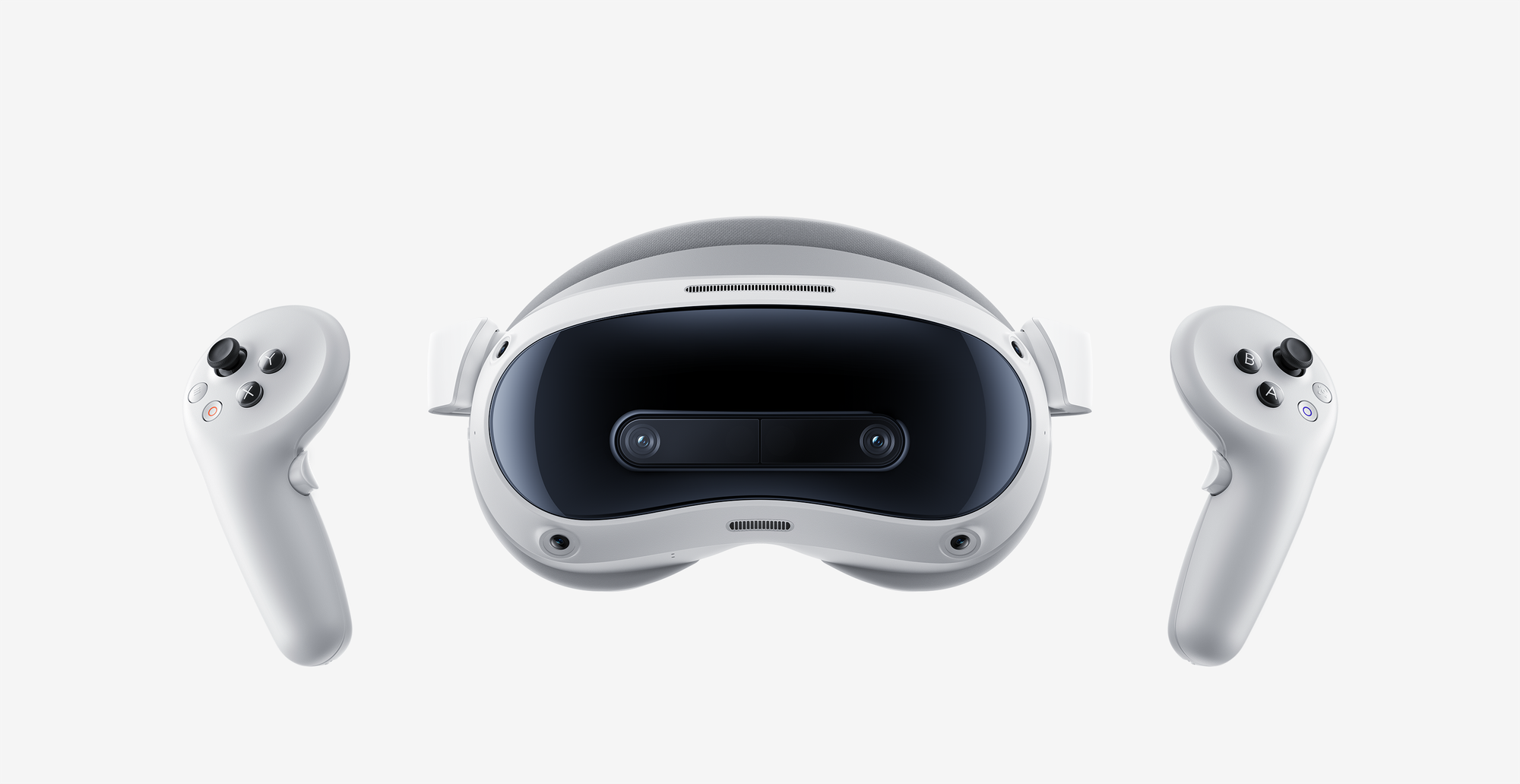
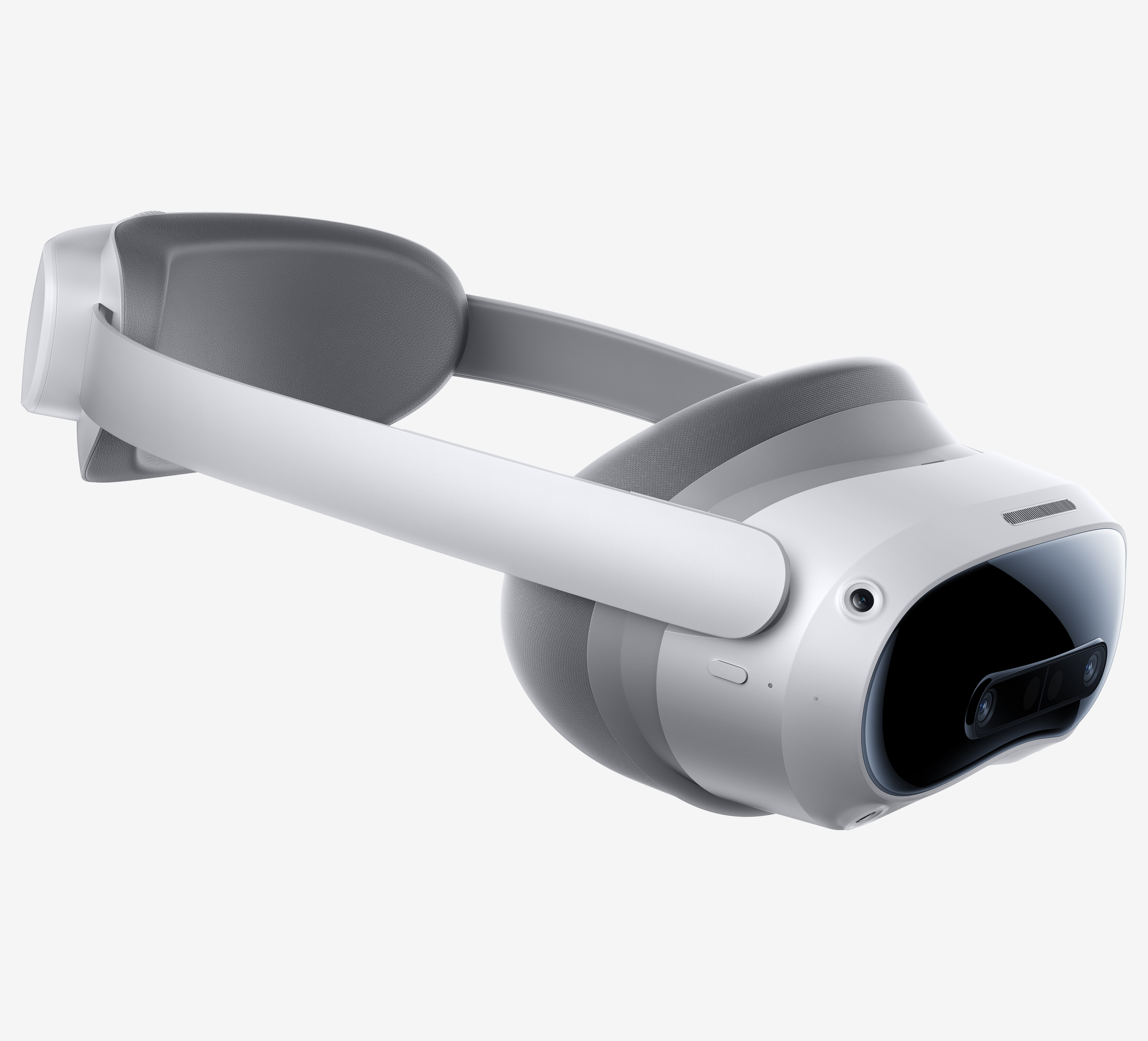
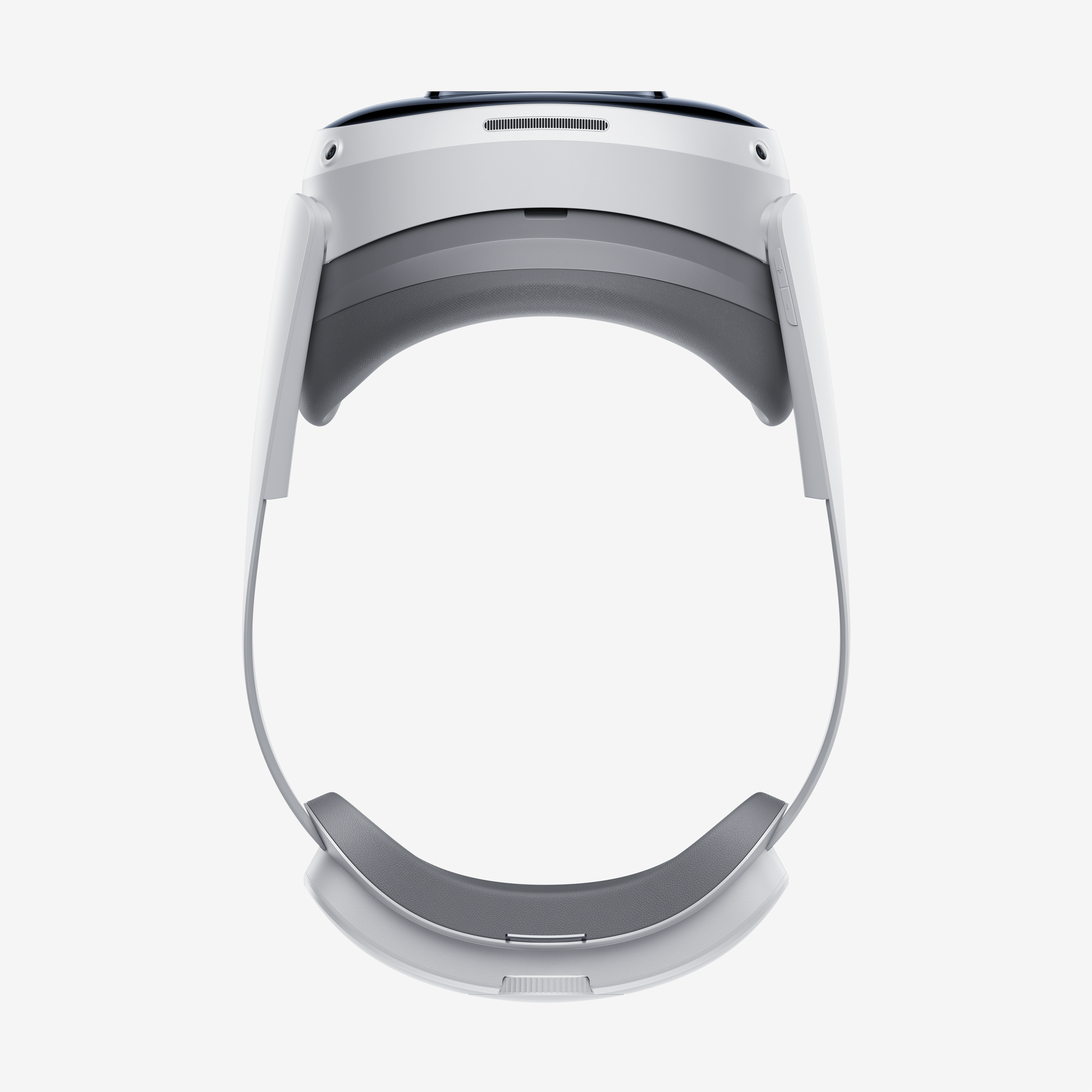
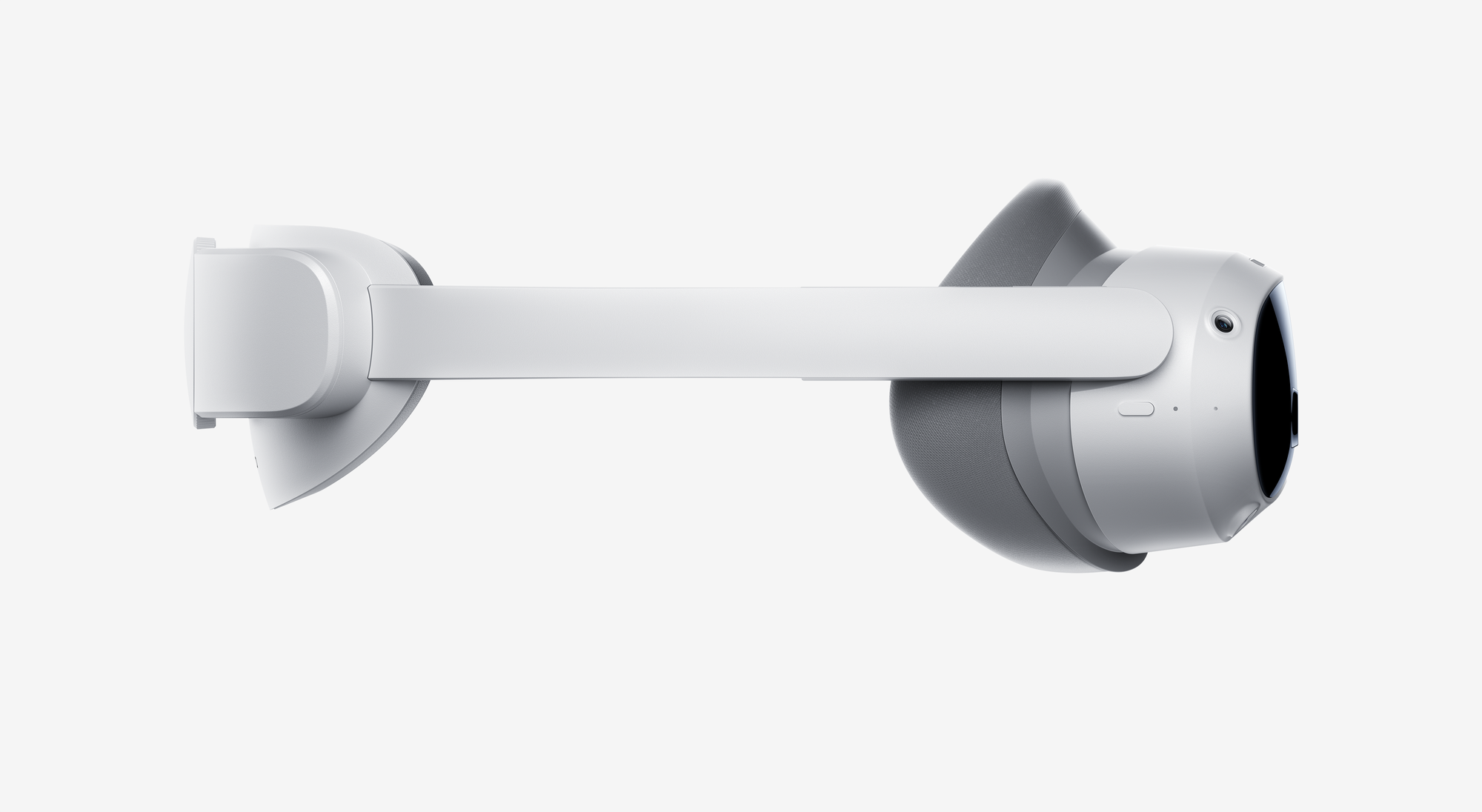
On Friday ByteDance will open preorders in the UK, Germany, France, Italy, Spain, Netherlands, Belgium, Austria, Switzerland, Norway, Denmark, Sweden, Finland, Japan, South Korea, Singapore, Malaysia and Thailand.
Pico 4 Ultra is priced at £530 in the UK and €600 in Europe and comes with 256GB of storage, meaning it's £50/€50 more expensive than the 128GB Quest 3 model but £100/€100 less expensive than the 512GB Quest 3.
Preorders will come with free Pico Motion Trackers for leg tracking, normally £80/€90, as well as Blade & Sorcery: Nomad, Infinite Inside, Let's Get Fit VR, and FootPool, together worth £40/€50.
Notably, just like its predecessor, ByteDance has no plans to launch Pico 4 Ultra in North America, meaning it won't be taking on Meta in its home turf.
I'll be going hands-on with Pico 4 Ultra soon to bring you my initial impressions of its hardware and software experience. We also plan to obtain a review unit to bring you a comprehensive review of Pico 4 Ultra as a complete product.

